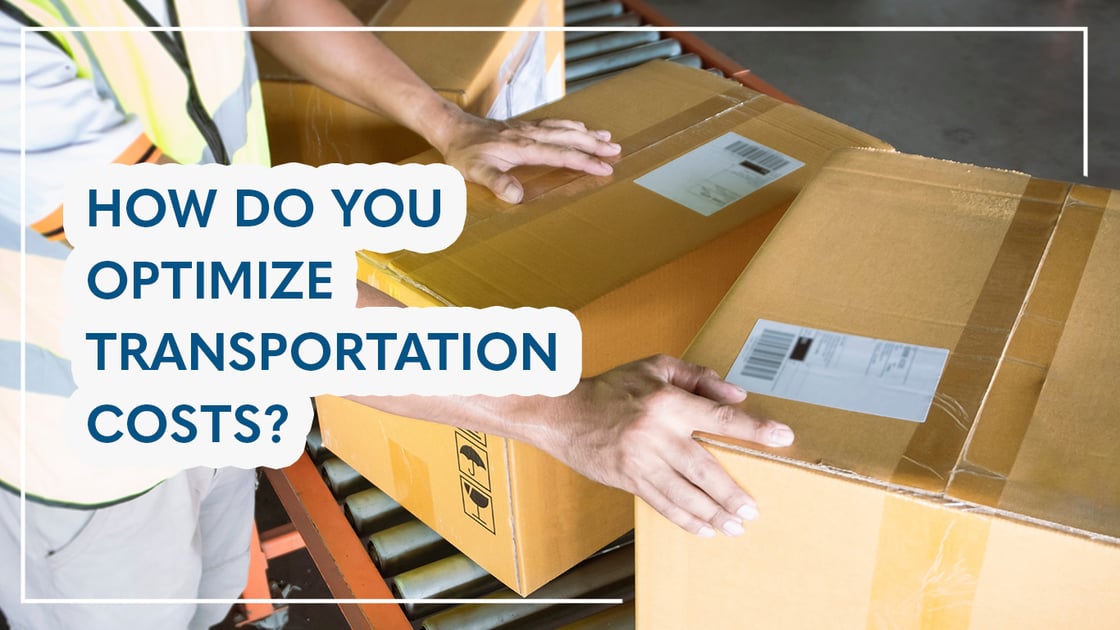How Do You Optimize Transportation Costs?
May 15, 2022 •Deyman Doolittle

In the modern age, the fees associated with shipping can make even the most seasoned business owners’ heads spin. One shipping expense that has been increasing in recent years is transportation costs. While performing a parcel invoice audit can expose the ways you are currently being overcharged in your current contract, shipping optimization lends itself to a unique set of challenges. Carriers like UPS and FedEx will be the ones taking on the task of the actual transportation of parcels for most businesses. This means it is up to you to judge whether or not whoever you choose to be your carrier is optimizing the costs effectively, as they will impact your expenses. This blog aims to equip you with all the knowledge and information to bring to your next contract negotiation.
What Is Transportation Optimization?
Before we jump into the items you should bring to the table when discussing shipping costs with your carrier, it’s important to understand what transportation optimization truly means. Put simply, it is the process of analyzing current shipments, rates, and noticeable constraints. This allows you to produce realistic plans that reduce overall spending and gain efficiencies across entire transportation networks. How can one gather that data and manage all of this information to prepare for a negotiation? Getting shipping insights and analytics from a company like ShipSigma allows your team to gain instant shipping intelligence with actionable insights. This data is based on every package shipped compared to your contractual obligations and rate model forecasts.
Determining Factors of Transportation Cost
In order to optimize transportation costs, it is beneficial to understand the factors that impact how much or little this amount could be. Here are three common factors that affect transportation costs.
- The Product: The product itself will play a significant role in transportation logistics. Weight, size, density, and fragility are all elements that are taken into consideration when adjusting the cost.
- Delivery Area: Carriers like UPS and FedEx will have additional charges depending on where the product needs to be delivered. It can be worthwhile to look into local services for shorter distances rather than choosing one of the more prominent brands.
- Fuel Price: One of the most apparent factors in transportation costs, fuel prices are constantly shifting, and carriers adjust their prices accordingly. Keep an eye out for national averages to make sure either you negotiate or the carrier offers a fair price.

How Is Transportation Cost Calculated?
One of the best ways a shipper can effectively communicate about prices with a carrier is by understanding how transportation costs are calculated. Each carrier will vary in exactly how they calculate these numbers, but in general, here is how that process might look.
The carrier will take either their monthly or yearly transportation expenses. Then, they will divide the total number of transportation expenses by their gross income (monthly or yearly to match) before taxes to get a percentage of how much their earnings are spent on transportation. It is also common for carriers to calculate operating costs per mile to get a more accurate number of the total cost of transporting goods.
How Can Transportation Costs Be Reduced?
Carriers are in constant talks with shippers every day, and it is not uncommon for both parties to not see eye-to-eye. With that being said, there are numerous ways you can prepare your organization to enter into an agreement or update your current one with carriers like UPS and FedEx.
- Utilize Data to Your Advantage: It is quite common for shippers to use multiple carriers to keep up with demand for their products. One great use of data would be to see that one carrier is consistently adding accessorial charges while another is not. You can then use ShipSigma's parcel invoice audit to automatically claim refunds and credits you are owed, delivering your cost savings without the hassle.
- Change Shipping Times: Carriers often experience peak operation points, meaning when they are their busiest. This is not always possible, but negotiating so that your shipping occurs during off-peak times, like later in the day, could decrease your transportation costs.
- Reduce LTL Shipments: Less-than-load shipments are when your shipments do not fill an entire truck on their own and will be loaded with another company's products. LTL shipments mean more trips, which will result in higher transportation costs.
ShipSigma: Negotiate with Confidence
We're experts in high-volume parcel shipping. Our AI-powered platform drives insights that no other organization can provide. If you are already shipping with UPS or FedEx, you can seamlessly integrate our process into your current operation. All you need to do is create a free account, connect your UPS or FedEx account, and see exactly how much you could save before negotiating your carrier contracts.

